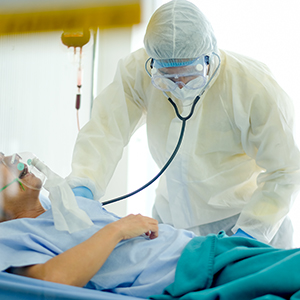Predictors of post COVID complications in patients admitted with moderate to severe COVID symptoms: A single center, prospective, observational study

All claims expressed in this article are solely those of the authors and do not necessarily represent those of their affiliated organizations, or those of the publisher, the editors and the reviewers. Any product that may be evaluated in this article or claim that may be made by its manufacturer is not guaranteed or endorsed by the publisher.
Authors
While the world was still busy battling active COVID-19 infections, a large subset of patients started showing prolonged symptoms or developing complications following an initial recovery from COVID-19. Post covid complications range from mild symptoms such as fatigue, headache, shortness of breath to serious, life threatening conditions like opportunistic infections, deep venous thrombosis, pulmonary embolism, pneumothorax and lung fibrosis. A single center, prospective, observational study was carried out in a tertiary respiratory care institute in North India from June 2021 to August 2021 where 224 cases of previously treated COVID-19/ongoing symptomatic COVID-19 (those patients who were manifesting symptoms beyond 4 weeks), were enrolled and followed up for a period of 3 months to estimate the prevalence of persistent symptoms, complications and any risk factors associated with it. Data analysis was done using SPSS software version 21. Univariate and multivariate analysis done among risk factors and outcome variables. ROC was done on predictor variables and area under curve (AUC) calculated. p value less than 0.05 was considered significant. Among the 24.6% symptomatic patients at follow up, the most common symptom was fatigue (51.8%) followed by dyspnea (43.8%) and anxiety (43.3%). Among the complications of COVID-19, the most common according to our study was fibrosis (15.2%), followed by pulmonary thromboembolism (PTE) (12.1%), echocardiographic abnormalities (11.2%) and pulmonary mucormycosis (5.4%). Female gender, presence of comorbidities, requirement of non-invasive or invasive ventilation during hospital stay emerged as independent risk factors for complications following COVID-19. This study brings forth the huge morbidity burden that COVID-19 brought upon seemingly cured individuals and lists the risk factors associated with persistence of symptoms and complications. This would help to better streamline health resources and standardize follow up guidance of COVID-19 patients.
How to Cite

This work is licensed under a Creative Commons Attribution-NonCommercial 4.0 International License.






